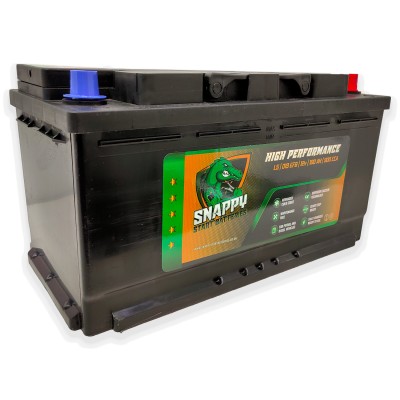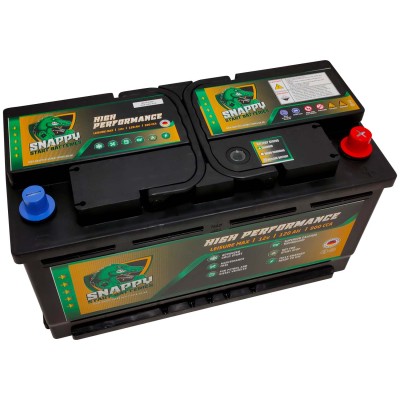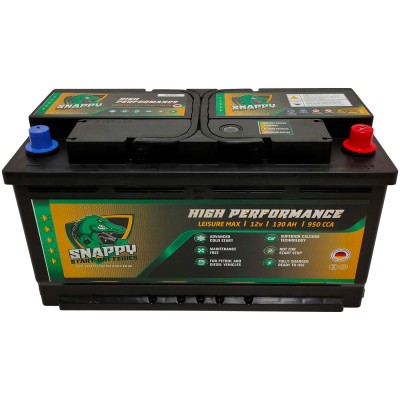 Delivers 100A to 12V in 1hr
Delivers 100A to 12V in 1hr 4-year warranty
4-year warranty 100+ cycles
100+ cycles Delivers 110A to 12V in 1hr
Delivers 110A to 12V in 1hr 4-year warranty
4-year warranty 150+ cycles
150+ cycles Delivers 120A to 12V in 1hr
Delivers 120A to 12V in 1hr 4-year warranty
4-year warranty 200+ cycles / 900cca
200+ cycles / 900cca
 Delivers 130A to 12V in 1hr
Delivers 130A to 12V in 1hr 4-year warranty
4-year warranty 200+ cycles / 950cca
200+ cycles / 950cca
Snappy’s Leisure Batteries Are The Best Choice For Your Caravan or Motorhome
A leisure battery is a necessary part of your vehicle. Its 12V electrical supply powers your electrical system and any appliances (TVs, kitchen appliances, lights, etc.).
If you own a leisure vehicle such as a caravan, campervan, or motorhome, you probably know a battery is essential because it powers everything inside, like lights and fridges. At Snappy Start Batteries, we are your one-stop destination for cheap, long-lasting leisure batteries.
Proper care extends the lifespan of a reliable leisure battery. We advise vehicle owners to keep charging their leisure batteries regularly and oversee their energy levels to prevent sudden power failure and significantly increase their lifespan.
It is vital to charge your leisure battery occasionally. It would be best to do it when it reaches about 50% life. This way, the battery will not be deeply discharged, which may reduce its lifespan and performance quality. Check out the blogs below for more content on leisure batteries from our team.
-2000x800.jpg)

MARK WATSON 19.11.2024
READ MORE >-2000x800.jpg)

MARK WATSON 17.11.2024
READ MORE >

MARK WATSON 15.11.2024
READ MORE >






















































































